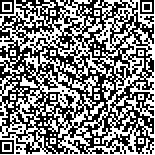下载中心
优秀审稿专家
优秀论文
相关链接
摘要

在国土资源监测、森林资源调查等多个领域中,基于遥感影像的分类技术受到了广泛应用。在利用传统分类器对地表覆盖分类提取中,地形效应是制约分类精度提升的一种因素,其影响可通过适当的校正模型减弱,且已证明地形校正能够对分类精度的提升起到积极作用。相比于传统分类器,基于深度学习理论的深度神经网络分类器具有深层特征学习和表达的优势,在图像分类领域兴起并逐渐用于土地覆盖分类且取得了不错的精度提升。本文初步探究了地形校正在利用深度神经网络分类器U-Net进行地表覆盖分类时对分类精度的影响情况。以Landsat 8 OLI 30 m影像为数据源,结合GDEM_V2 30 m地形数据,在GlobeLand 30和全国30 m森林分类结果的基础上,利用U-Net深度神经网络分类器实现了山区地表覆盖分类提取,并就不同训练样本获取方式及不同精细程度分类体系下地形校正前后的分类精度做了对比分析。分类结果表明:(1)规则网格裁切和坡向辅助裁切这两种训练样本获取方式下,地形校正后的分类精度较校正前不变或有极小幅度的降低,降低范围在0.9%—1.39%;(2)在对更精细的森林类型分类中,地形校正后的分类精度较校正前下降了1.66%。本文初步探究得到:在规则网格裁切和坡向辅助裁切这两种训练样本获取方式及不同精细程度的分类体系下,地形校正均未能提高U-Net深度神经网络分类器的分类精度。
Remote sensing image classification technology has been widely used in land resource monitoring, forest resource investigation, and other related fields. For the traditional classification methods, terrain effect is an unavoidable factor that restricts the improvement of classification accuracy in the classification of land cover types, and the influence can be weakened by an appropriate correction model, and topographic correction has been proven to play a positive role in improving classification accuracy. Compared with traditional classifiers, deep neural network classifiers based on deep learning theory have the advantages of deep feature learning and expression, which have emerged in the field of image classification and have been gradually applied to land cover classification with good results.Our study has some shortcomings. First, some errors remain in GlobeLand30 and national forest classification products compared with the actual surface cover types. Therefore, more detailed and accurate classification results need to be found as sample labels in the future. Second, the surface of sunny-shady slopes with different types of coverage is not considered in this study. Finally, U-Net should not be the sole focus. In subsequent research, we will attempt to select a variety of deep neural network classifiers to explore the classification accuracy changes before and after topographic correction of neural network models at a more precise scale to obtain further conclusions.This paper further explores the influence of topographic correction on the classification accuracy of land cover classification by deep neural network classifiers.Using Landsat 8 OLI image data and GDEM_V2 terrain data with 30 m resolution as data sources, and based on the classification results of GlobeLand30 and national forest types, this paper implemented the classification extraction of land cover types by the U-Net semantic segmentation network and made a comparative analysis of classification accuracy before and after topographic correction with different sample acquisition methods and different levels of classification systems.Classification results show the following. (1) With two training sample acquisition methods, namely, grid clipping and aspect auxiliary clipping, the classification accuracy after topographic correction is unchanged or slightly reduced compared with that before correction, and the reduction range is 0.9%—1.39%. (2) For the classification of more precise forest types, the classification accuracy after topographic correction decreased by 1.66% compared with that before correction.In this paper, we conduct a preliminary study and find that in the classification of land cover types by the U-Net model with different sample acquisition methods, namely, regular grid clipping and aspect auxiliary clipping, and under different classification systems, the classification accuracy of the deep neural network classifier-U-Net is not improved by the topographic correction process.Our study has some shortcomings. First, some errors remain in GlobeLand30 and national forest classification products compared with the actual surface cover types. Therefore, more detailed and accurate classification results need to be found as sample labels in the future. Second, the surface of sunny-shady slopes with different types of coverage is not considered in this study. Finally, U-Net should not be the sole focus. In subsequent research, we will attempt to select a variety of deep neural network classifiers to explore the classification accuracy changes before and after topographic correction of neural network models at a more precise scale to obtain further conclusions.

